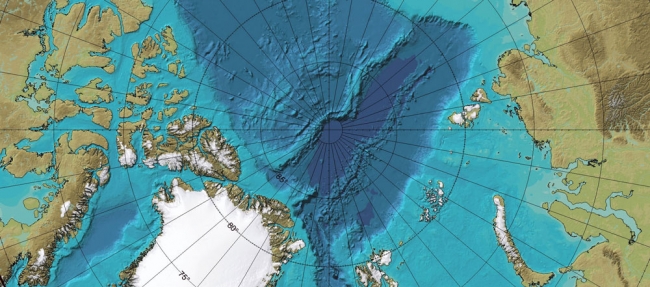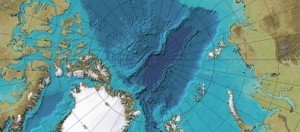December 13, 2013 – It seems appropriate to talk about Canada’s revised Arctic claims on a Friday the 13th of December in the year 2013. The only thing that would make it even more appropriate if there was a 13th month to the calendar.
If you have been reading the news in the last two weeks our government received recommendations on its Arctic sovereignty claims which were rejected by the Prime Minister and sent back for a rewrite. Canada’s government wanted to make sure that the underlying geography of the Arctic Ocean floor indicated that the continental shelf ran clear up to the North Pole, an area hotly disputed by Canada and Russia as lying within their territorial boundaries.
Why does Canada want a big piece of the Arctic Ocean floor? Because, the rationale goes, we can then exploit the “tremendous resources that are to be found in Canada’s far north.” So states Canada’s Foreign Affairs Minister, John Baird.
The Arctic Ocean seabed overlays gas and oil deposits. There are potential ore deposits, hydrates and mineral-rich tungsten nodules scattered about that Canada can harvest in the decades to come.
The area in dispute between Russia and Canada is the Lomsonov Ridge (seen in the centre of the image below), an underwater structure that runs for 1,800 kilometers (approximately 1,100 miles) across the seafloor connecting islands off the Siberian coast with Ellesmere, Canada’s most northerly island. The ridge is a shallow part of the Arctic Ocean and is considered prime seabed real estate for both countries.
What neither country has considered is just how foolish these claims will turn out to be in light of the inhospitable and inaccessible conditions in which the resources lie. Even if the Arctic sea ice completely disappears by the end of the 21st century the Arctic Ocean will never be a benign place in which to do mining for oil or any other resource. One accident at an oil rig platform, similar to the one Russia recently experienced in the Sea of Okhotsk or a repeat of a blowout such as occurred on the BP Deepwater rig in the Gulf of Mexico, and you would have an environmental nightmare on your hands that no amount of dispersant could rectify.
Add to this the fact that in the near future all governments including both Canada and Russia will begin to tax carbon and reduce the burning of fossil fuels. What will be the point of exploring for oil under the Arctic seabed in a future world where oil will no longer prime the economic pump?
But that’s not stopping Canada from flexing its muscular claims to the Arctic Ocean seabed including the area around the North Pole. What would Santa say?













